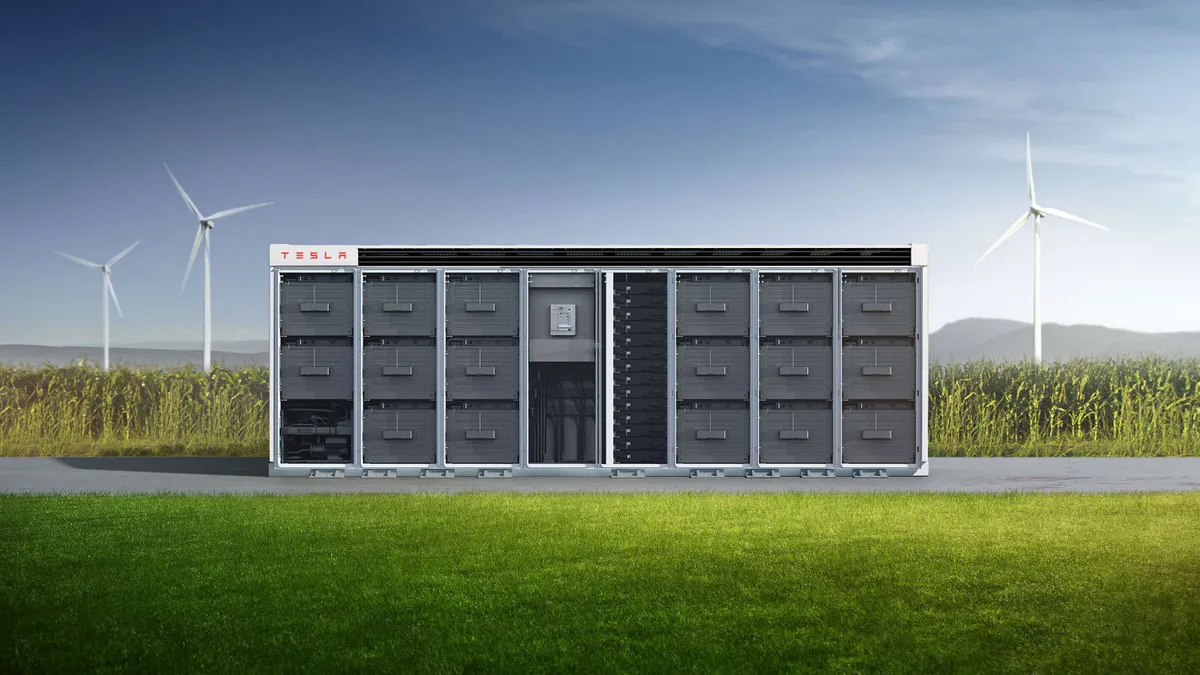The PJM Interconnection should reform its rarely used Surplus Interconnection Service process — a fast-track pathway for adding capacity to its system — which is effectively unusable for battery storage resources, according to a report from the American Council on Renewable Energy.
SIS allows a new resource to use any unused portion of an existing generating facility’s interconnection service as long as the total amount of interconnection service at the point of interconnection remains the same.
Under the SIS process, projects that don’t trigger transmission system upgrades qualify for expedited review outside the interconnection queue, Michael Borgatti, the report’s co-author, said Wednesday during a webinar. Borgatti is senior vice president of RTO services and regulatory affairs at Gabel Associates.
The SIS review process takes about 270 days to complete. If the rules were changed, it could unlock significant capacity in PJM, which faces capacity shortfalls later this decade, Borgatti said. Battery storage projects can be built in roughly two years, making them an attractive option for meeting PJM’s near-term capacity needs, he said.
PJM’s forecast resource mix for the 2026/27 delivery year includes about 9.7 GW of nameplate capacity from fixed and tracking solar resources, according to the report. Given those resources’ low “effective load carrying capability” values — 8% for fixed solar and 13% for tracking solar — their accredited capacity is 1.9 GW, leaving about 7.8 GW potential available capacity at their interconnection points, Gabel estimated.
PJM also has about 25 GW of combustion turbines, which are mainly used as peaking resources and could provide unused interconnection capacity, Borgatti noted. They had a 62% or 79% ELCC in PJM’s most recent capacity auction, depending on fuel type.
“You are talking about … tens of thousands of megawatts of additional generation that you could get on the system if you were to adopt rule changes that were consistent with what FERC, I think, intended by Order 845 and what we see in places like [the Midcontinent Independent System Operator] and [Southwest Power Pool],” Borgatti said.
The report calls for three changes to PJM’s SIS process:
- End the effective prohibition of SIS participation by grid-charging battery storage resources.
- Harmonize battery storage and pumped hydro storage modeling assumptions.
- Adopt the Federal Energy Regulatory Commission’s standard allowing SIS if resources do not trigger the need for new network upgrades.
The proposal dovetails with PJM’s move to take better advantage of existing resources by reforming its process for transferring capacity interconnection rights from retiring power plants to new resources, David Mindham, director of regulatory and market development for EDP Renewables North America, said during the webinar.
Further, EDP’s potential customers increasingly want load-following clean energy, according to Mindham. The renewable energy developer estimates that about 80% of its projects could be load-following with the addition of energy storage, he said.
However, PJM is blocking that potential through its SIS rules, which led EDP to file a complaint at FERC in July. “Rather than embrace Surplus Interconnection Service, PJM has sought to kill it,” EDP said in the complaint. “PJM has adopted processes that prevent its use.”
EDP planned to add 200 MW of solar to its 200-MW Meadow Lake 1 wind farm in Indiana, while keeping its total output to the grid at 200 MW. PJM rejected the SIS request because EDP planned to operate the wind and solar farms simultaneously, according to the complaint.
In urging FERC to dismiss the complaint, PJM said it followed its commission-approved rules when it rejected EDP’s SIS request. The proposal would have affected the transmission system, which was grounds for rejecting the request, the grid operator said.
The pending complaint is supported by Advanced Energy United, the American Clean Power Association and the Solar Energy Industries Association as well as Invenergy Solar Development North America, EDF Renewables and the Sierra Club.
PJM spokesman Jeffrey Shields said in an email, “We welcome the opportunity to work with developers interested in bringing in projects" through the FERC-approved SIS process, which Shields noted is outlined in PJM’s Manual 14H in Section 12.1.1.
Mindham says a “handful” of projects have cleared the process; PJM declined to share the number and size of such projects, saying the information is not public.
Editor’s note: This story has been updated with a comment from PJM.















